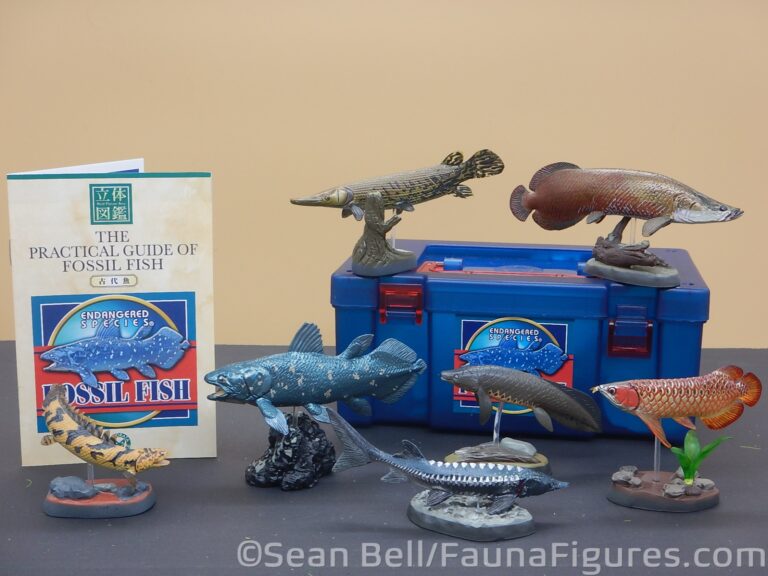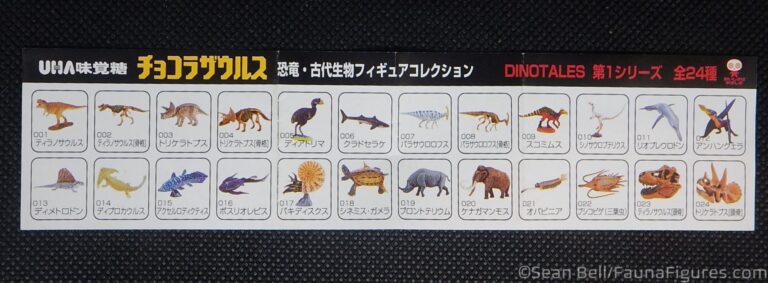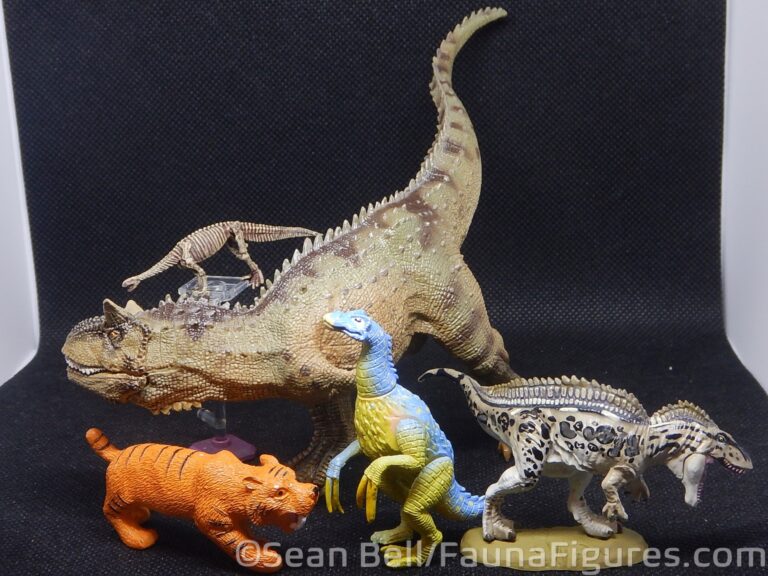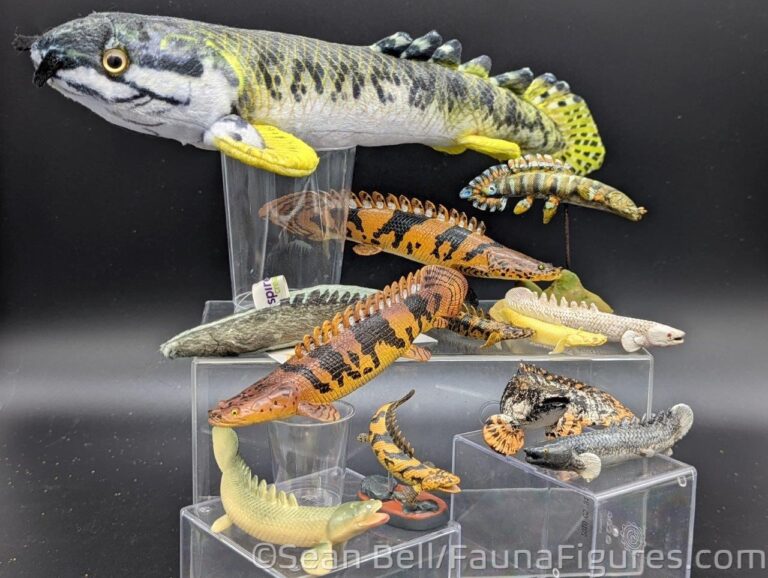Here we are with another post about bichirs already. The Random Number generator made some interesting picks, but this one is extra special. It has been just over a year since I started these posts! So being able to talk about one of my favorite figures, about one of my favorite animals, is just icing on the cake! And as a special treat–there’s actually two figures (well, versions).
The figure here is yet another Kaiyodo figure (yeah, I have a lot of them!) from yet another series, one with a kind of strange history. In the era of the Dinotales and Animatales (a series of modern wild animals) Kaiyodo also released a Pets lines; all of this was combined with a candy from Furuta under the name ChocoEgg (so in this period, there were 3 hyper detailed line of put-together figures in Japan…that’s not fair). And then one year Furuta and Kaiyodo split–and instead of discontinuing the line, there were now two! Furuta carried on with ChocoEgg animals. Kaiyodo teamed up with Takara and created ChocoQ, and carried on with the Animatales and Pets. And so here we are, the Takara ChocoQ Pets Polypterus endlicheri figures by Kaiyodo. If this all sounds confusing…it was worse when it was really happening, in about 2003 or so (when we knew the planned animals but didn’t know if they’d get released).
I was especially thrilled when I happened to be browsing auctions from my favourite seller on Ebay in the halcyon days of 2005. I saw this figure and immediately hit the buy it now! At that time, I had never seen a figure of a bichir at all! I was even more excited to discover that there were actually two–the natural pattern, and an albino version (popular in aquaria). Which, looking again, maybe it’s leucistic–the eyes are dark instead of red. In the tradition of these figures, they are multiple pieces and are generally small, just under 9cm long.
These bichir figures are so very well done, which is great because another wouldn’t come until Colorata made one in about 2011 or so. There is a kind of slow curve to the body, posed to rest flat on the ground with the pectoral fins straight out. The finlets are individually sculpted, and even have the very tiny pinnules sculpted in and all of the fins are in a translucent plastic, adding to the realism. Care has been taken around the face to ensure that the big lips of this particular species are identifiable. The sculpts are of course the same for both colour versions but the detailing of the paint jobs are incredibly well done. Getting the patterns and colours of the natural saddled bichir must have been a challenge, there is a lot variability and patterns. For the so-called albino..well, the grading yellow from the back into the white belly. But again, the lack of red eyes would indicate a leucistic animal; in a way, that’s almost more unusual for a figure, so that’s kind of cool since that may actually be less common in animal figures (not that I have been keeping track).
More than most figures, I am probably very biased when I say that everyone should try to get these figures. As one can imagine, these are long out of production and were only available in Japan, so they weren’t widely available even upon release, although auctions do pop up for them. They are also kind of brittle, so not great toys–I actually have two of each of these–because the piece that bears the two pectoral fins broke on both of my first figures. I was lucky to find replacements that were reasonably priced. Still, totally worth it. At least there are other saddled bichir figures if you need them, a large one by the company Favorite (of Japan) and a smaller size one by Colorata as part of a set of primitive fish…you may notice the theme that they’re all Japanese and they’re all the same species. Still, cool to have, and I recommend hunting them down!











